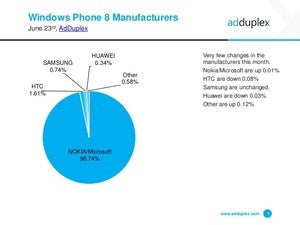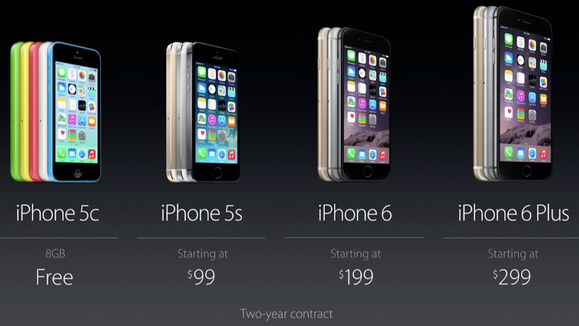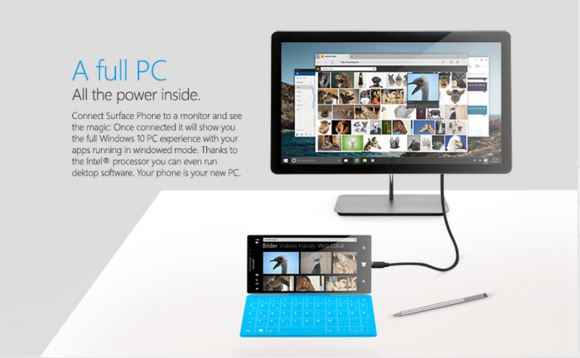For Microsoft, the only way out of its big Windows Phone mess is to follow Apple
For Microsoft, the only way out of its big Windows Phone mess is to follow Apple
A few well-regarded flagship devices, a focused core experience, a vibrant app ecosystem, and a belief in the quality of its own products: Apple lives and breathes these things, and has achieved massive profitability in the phone space as a result. And it’s about the only strategy Microsoft has left to try.
Soon after purchasing Nokia’s device business for $7.2 billion last year, Microsoft began to dismantle it—first laying off a third of the staff, and more recently waving goodbye to business unit head Stephen Elop and other top executives. Today it’s writing off another $7.6 billion in impairment from the Nokia Devices and Services Business and laying off 7,800 employees. These actions tacitly acknowledge two errors: First, buying Nokia itself was a colossal mistake. Second, the strategy of making mass-market boring phones instead of eye-catching flagship phones was failing.
But ignore all the enormous numbers flying around, and focus on what’s important. The $7.2 billion Microsoft paid for Nokia is the same amount the company doled out to shareholders just last quarter, in both share repurchases and dividends. Wall Street might be livid, but Microsoft’s still got plenty left in the war chest.

The real question is whether Microsoft’s Windows Phone strategy is still viable. And the answer is: yes—although Microsoft is now essentially betting the farm on a successful launch of Windows 10 Mobile this fall. Nadella pledged to bring to market a more “effective” portfolio of Windows phones, a strategy of tough love that managed to be both practical as well as aspirational.
“We plan to narrow our focus to three customer segments where we can make unique contributions and where we can differentiate through the combination of our hardware and software,” Nadella wrote in an email that the company published. “We’ll bring business customers the best management, security and productivity experiences they need; value phone buyers the communications services they want; and Windows fans the flagship devices they’ll love.”
A solid business experience, flagship devices, and budget phones. Well, two out of three ain’t bad.
Going it alone
It’s not entirely clear what Nadella’s long-term strategy is. Optimists will note that Nadella explicitly states that he is “committed to our first-party devices including phones.” Pessimists, like analyst Jan Dawson, believe that Microsoft’s strategy of pushing core services like Outlook, OneDrive, and more to iOS and Android is a hedge that gives Microsoft a graceful way to exit from the phone business if need be.

If Microsoft is going to make a go of Windows Phone business, it will have to go it alone. In June, AdDuplex’s sample of Windows Phones found that more than 96 percent of them were manufactured by Microsoft.
“I honestly expected some of this, and it is likely, economically, a tough, but necessary choice,” Wes Miller, an analyst with Directions on Microsoft, said in an email. “It seems that there hasn’t been a cohesive strategy for Lumia Windows Phones to date in terms of branding, marquee devices, or device evolution.”
Miller said he sees Lumia’s evolution unfolding like this: Microsoft will try to sell business customers on Office 365 and its Enterprise Mobility Suite, while Microsoft will abandon the low end of the market and focus on premium devices. Microsoft will then encourage budget consumers to adopt Skype, Outlook.com, and OneDrive on other devices to lure them into the Microsoft ecosystem.

The Apple model: Do it right, do it yourself
Ideally, Microsoft’s own first-party Lumia phones would stand as a Surface of sorts for the phone market. Nadella has been remarkably consistent with its message: He wants Microsoft to create new categories of devices that others can learn from, emulate, and follow into the market. Today, we’re seeing a number of well-built two-in-one PCs or ultrabooks that are just a bit more rugged than the Surface Pro 3.
But Microsoft’s Surface model also assumes two conditions that the Windows Phone market lacks: a coterie of hardware makers trained to follow Microsoft’s lead, and a healthy app ecosystem. Microsoft hoped to solve the first problem by seeding budget phones in the U.S. and abroad, boosting sales and helping to make the case that a viable market existed. Its more recent plan to bring iOS and Android apps to the Windows platform was designed to convince software developers that they could make money from Windows, too.
Hopefully, Nadella’s memo shows that its budget phone strategy was a mistake. Apple devotees can certainly tell you what components Apple built into the iPhone 6, but even the most ardent Windows Phone fanboy would be hard-pressed to differentiate one Lumia budget phone from another.
Apple has shown us that a phone maker doesn’t need dozens of unremarkable budget phones. Instead, it marks down the price of yesterday’s flagship. Neither does it depend upon a number of hardware partners eager to flood the market with their own knockoffs.
 NADIR ASLAM
NADIR ASLAMAnother case for the Surface phone
I would argue that the core experience of a Windows Phone is as vibrant as anything Apple makes. But Microsoft needs to develop a flagship phone that can embody it. So far, something like the Surface phone has been merely a concept—but maybe it truly needs to become a reality.
This fall, Microsoft needs to proudly unveil Windows 10 Mobile and show how that its new operating system creates the best business phone on the market today. It needs to show how the new universal Office apps let users edit and even create documents on the road. And if, just if, they lose everything except their Windows phone, they can replace their Windows PC with a Windows 10 phone running Continuum. Those Windows 10 phones should be well-designed, desirable devices that will attract new customers and deepen the ties with Windows faithfuls.
Microsoft has said it will ship new flagship phones in the fall. Assuming that work is nearly completed, today’s layoffs could be something more akin to game developers’ being let go at the completion of a project. Microsoft’s phone business should keep moving forward powered by its own momentum.
The real test will come this fall, when customers evaluate the new flagship phones, Windows 10 Mobile, and Microsoft’s new strategy for its Lumia line. Only then will Nadella and the rest of his team grade Microsoft’s phone business, and determine whether it will pass, or fail.

